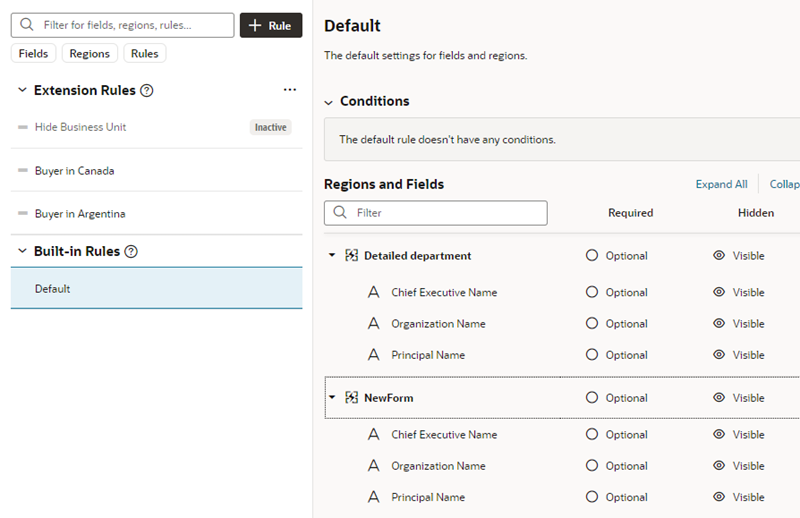What Are Business Rules?
Business rules allow you to override the appearance and behavior of fields in dynamic tables and forms, provided that the specified conditions in a rule are met at runtime.
Note:
If you're looking for information on business rules as they pertain to business objects, see Create Rules for Business Objects.Note:
In some applications, where you see fields grouped into regions in the business rules editor, a region is simply a dynamic table or form.
For example, suppose you had a data object called Person, that was used in two dynamic forms. Now suppose you want to hide the Organization Name field when the user is a manager, as only HR specialists should see this data. With business rules, you can create a single rule that defines the condition, then overrides the setting for the Hidden property to ensure that Organization Name is hidden when the user is a manager. With this one action, the Organization Name field will be hidden for every region that includes that field.
In other words, business rules let you define a rule at the object level. Let's look at a page with several dynamic forms. These are listed in the Regions and Fields section in the image below. Some components use the same data object, and you can quickly see every field used in each component. When you set a property in a business rule you are setting it at the object level, so it can be applied to every occurrence of that field, in each form or table using that data object.
There are two types of rules: form rules, which control the properties of fields in dynamic forms, and collection rules, which determine the columns displayed in tables. Form and collection rules defined in a dependency are read-only, and you can identify them by their Built-in label visible in the list of rules. For more, see Create a Rule For Forms and Create a Rule For Tables.
